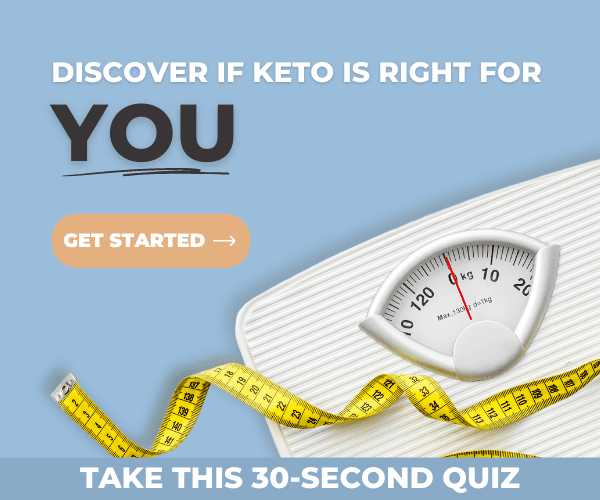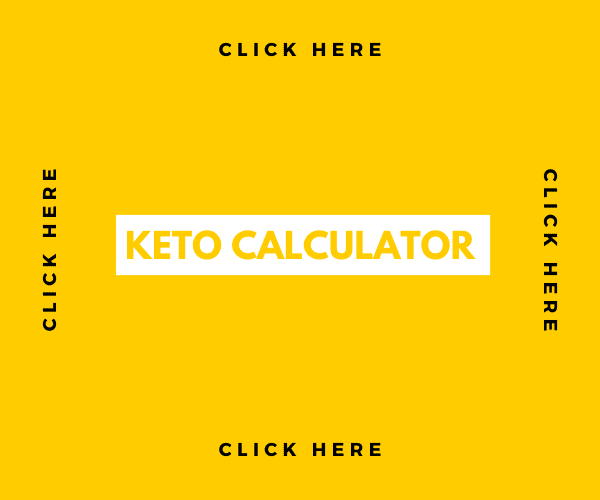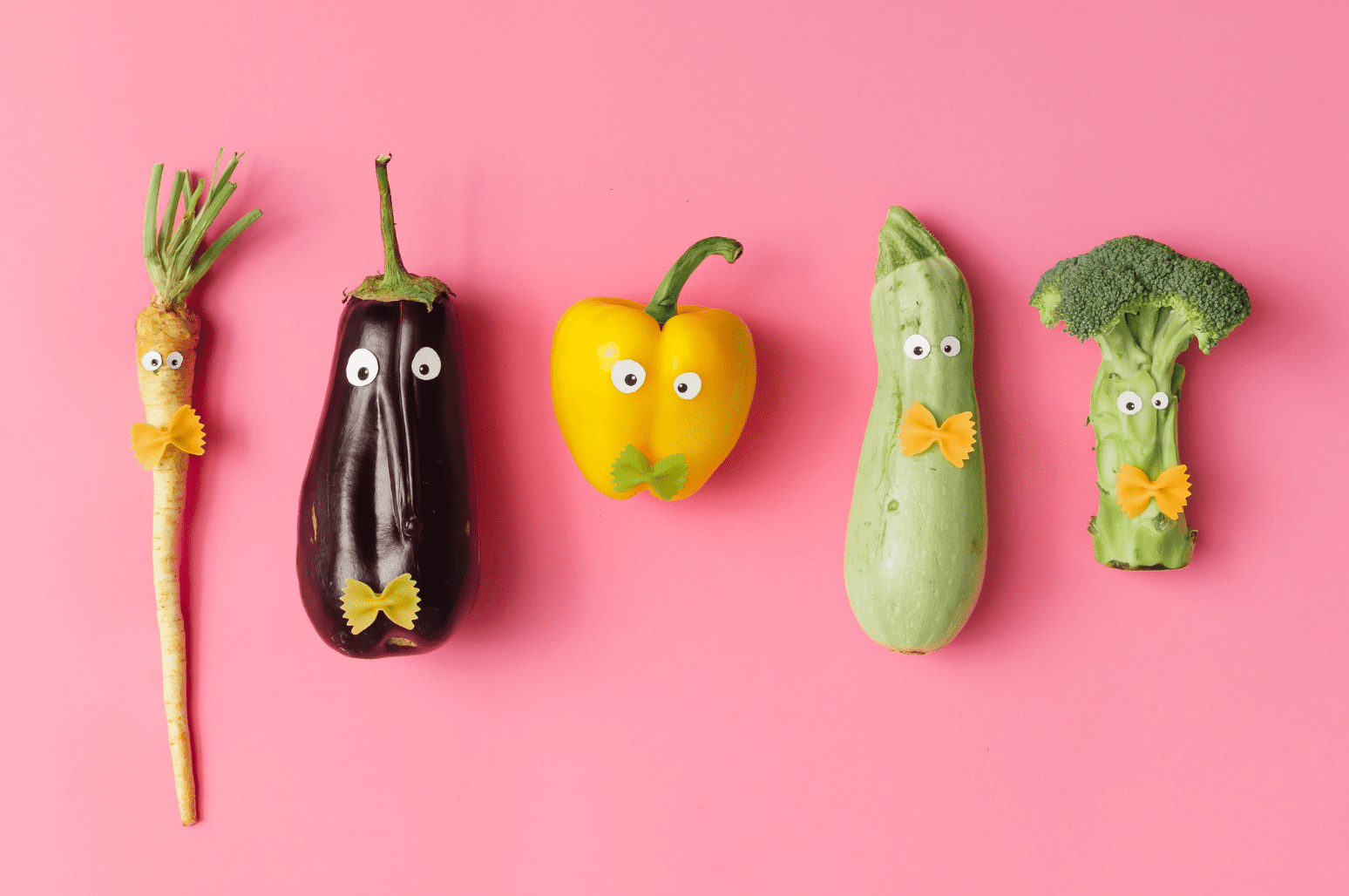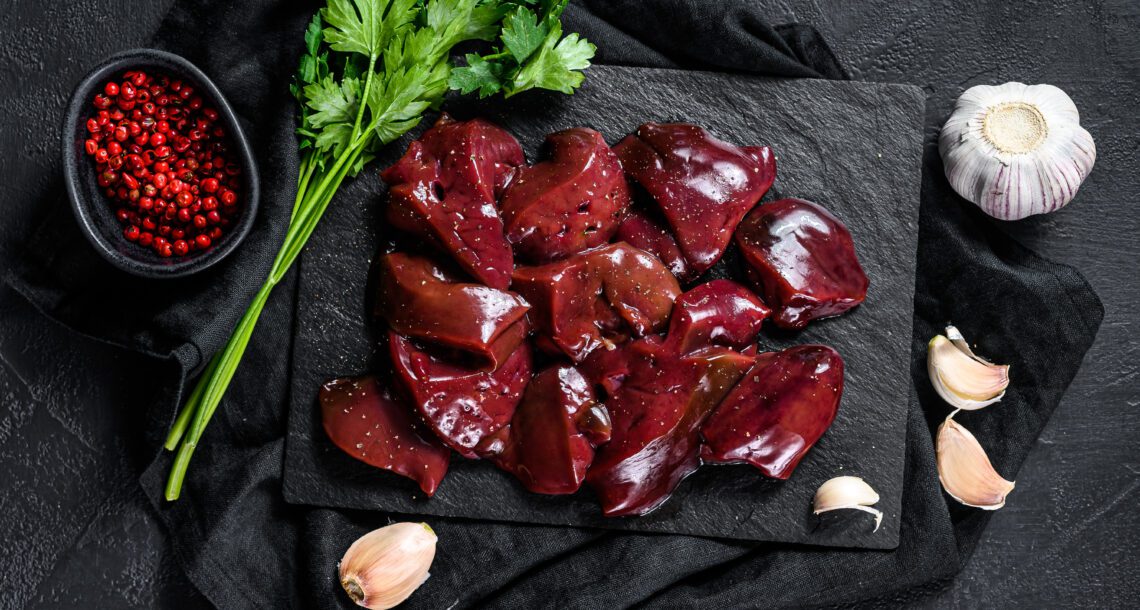
Liver and onions made a popular dish back in the day. As technology and industrial processes become more advanced, more people seem to be switching natural, nutritious foods like liver for processed foods lacking in nutrition. To say liver is a superfood isn’t an exaggeration. Let’s discuss why liver is a superfood and the best ways to include it in your ketogenic diet.
What Is Liver?
Liver is a vital organ found in animals and humans. The liver is responsible for processing digested food, filtering toxins from the bloodstream, and storing iron, glucose, and vitamins.
Muscle meats are now favored over organ meats, but liver used to be one of the most preferred animal foods rich in protein, vitamins, and minerals and low in calories. People counting calories can obtain lots of nutrition and fewer calories consuming liver. Eating foods low in calories and high in nutrients has been proven to suppress hunger! Liver also has a lower amount of fat compared to lamb and steak. [1]
Fruits and veggies are delicious and nutritious, but liver is actually far superior when it comes to nutrition, and it contains almost every nutrient you need! A small serving of liver provides more than 100% of the recommended daily intake (RDI) for most essential nutrients. Liver also provides smaller amounts of vitamin C. [2]
Eating healthier can be more expensive, but when it comes to liver, it’s affordable and readily available in butchers and grocery stores. The most commonly consumed animal livers are cow, duck, chicken, lamb, and pig.
Liver Nutrient Profile
It’s not an understatement to say liver is a superfood with an impressive nutrient profile. One 3.5 ounce (100 gram) serving of beef liver gives you nutrients like vitamin A and B12, folate, iron, copper, riboflavin, and choline.
Folate
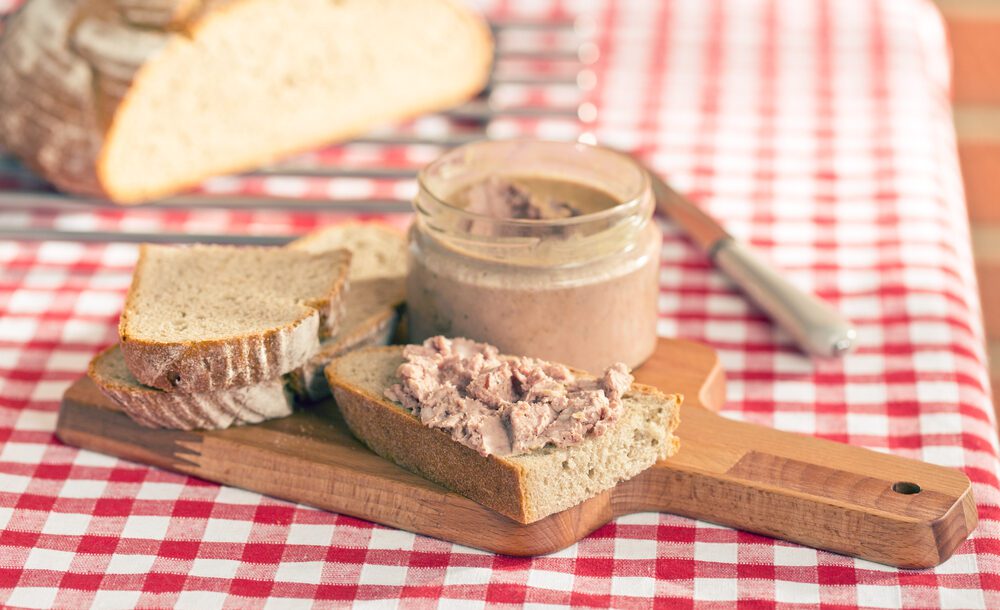
One serving of liver provides 65% of the RDI. Folate or vitamin B9 is an essential nutrient necessary for DNA formation and cell growth. [3]
Riboflavin
One serving of liver gives you 210-260% of the RDI for riboflavin (B2). Riboflavin is important for cellular function and development. [4]
Iron
Iron is an essential nutrient that assists in carrying oxygen around your body. One serving of beef liver gives you 80% of the RDI for iron or 35% for menstruating women. [5] [6]
Copper
One serving of beef liver gives you 1,620% of the RDI for copper. Copper activates enzymes that regulate brain function, iron metabolism, and energy production. [7]
High-Quality Protein
Protein is essential for life, muscle building, cell repair, and more. High-quality protein with all the essential amino acids makes up over one-quarter of beef liver. You have to get these essential amino acids from your diet. Protein can satisfy hunger and help with weight loss.
What About Cholesterol or Toxins?
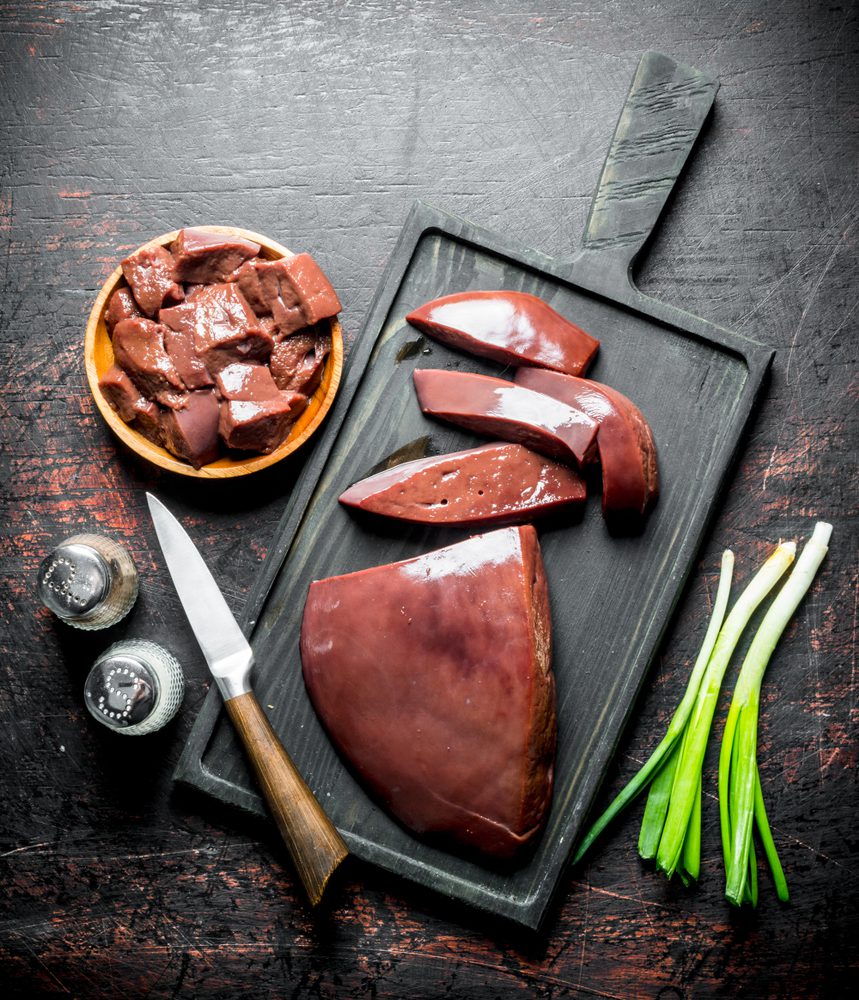
Some people voice concerns about consuming liver.
Cholesterol
For example, a common concern is regarding the cholesterol content. However, while liver is high in cholesterol, this isn’t a problem for most people. Research shows dietary cholesterol has little to no effect on the cholesterol in the bloodstream. Heart-disease related cholesterol is produced in the body, and when you eat foods higher in cholesterol, your body actually produces less to maintain balance. Read our informative article for more info on cholesterol. [8] [9] People who are more sensitive to cholesterol in food might need to limit liver consumption.
Toxins
Another prevailing concern is surrounding toxins. The job of the liver isn’t to store toxins, rather to process toxins, so they can be safely removed from the body. Toxins in the liver aren’t a cause for concern and eating liver shouldn’t be avoided for this reason.
High Vitamin A
Liver does contain high amounts of vitamin A, and some people believe pregnant women shouldn’t over consume preformed vitamin A due to a risk of birth defects. More research is needed in this area to reach a solid conclusion, but pregnant women might choose to err on the side of caution and limit quantities. [10]
Gout
Gout is a type of arthritis. One cause of gout is believed to be high levels of uric acid in the blood leading to symptoms like joint pain, stiffness, and swelling. Liver contains purines, which form uric acid in the body.
If you’re dealing with gout, you might need to avoid or limit your liver intake. This doesn’t necessarily mean eating liver causes gout. More research is also needed in this area. Various factors can increase the risk of developing gout, with dietary factors only playing a small role (about 12% of cases). [11]
It’s important to note while high purine consumption is linked to gout attacks in those who already have hyperuricemia (high levels of uric acid in the blood), purine intake alone isn’t enough to trigger gout attacks. Uric acid levels often decrease during gout attacks to normal ranges.
Organ meats and gout present a conundrum. On the one hand, organ meats have a higher purine content, which can be problematic and trigger a gout attack for some people. On the other hand, the nutrients, minerals, and healthy fats in liver and organ meats can actually help prevent gout attacks. Some symptoms of gout exist without the crystals, leading many people to believe gout is more of a liver problem as well as more of a fructose (sugar) problem.
Inflammatory markers like C-reactive protein (CRP) and interleukin-6 (IL-6) are involved in inflammatory conditions and autoimmune diseases and have also been associated with gout flares and an increase in joint serum and fluid. [12] [13] Sugar also spikes inflammation.
Once again, it seems sugar and inflammation are bigger players triggering chronic disease. Foods high in purines like seafood, sardines, and grass-fed beef, are also high in anti-inflammatory omega-3 fatty acids, which could help counteract the problem of gout.
If you have any concerns about your diet or adding or removing a food from your diet, it’s always best to visit your doctor or healthcare practitioner.
Best Ways to Include Liver in Your Diet
Liver is like marmite, you either love the flavor, or you hate it! Enjoy liver pan-fried with onions, mixed into meatballs or burgers, or however you like it!
Try a keto liver recipe:
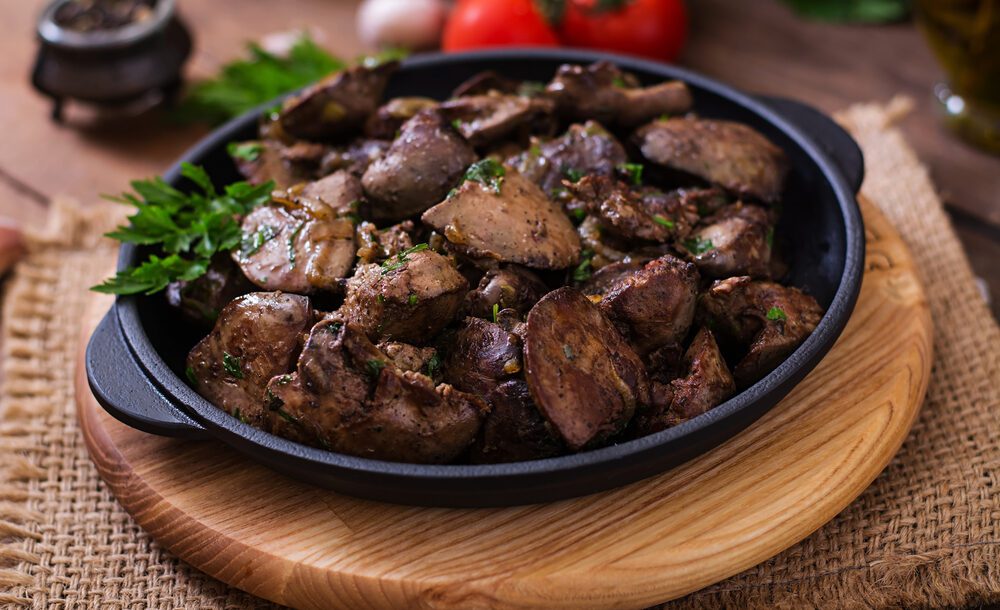
Mixing your liver into a meaty dish like burgers with your favorite seasonings helps you disguise the flavor if it isn’t your favorite. Use a ratio of two portions of beef to one portion of liver. You can also soak liver in lemon juice or milk before cooking to reduce the strong flavor.
Lamb, chicken, and calf liver have a milder taste than beef liver.
References
Fuhrman, J., Sarter, B., Glaser, D., & Acocella, S. (2010). Changing perceptions of hunger on a high nutrient density diet. BMC Nutrition Journal, DOI: 10.1186/1475-2891-9-51
Self Nutrition Data. Beef, Variety Meats and By-Products, Liver, Cooked, Pan-Fried, Nutrition Facts & Calories. https://nutritiondata.self.com/facts/beef-products/3470/2#ixzz7GIDiEWvj
National Institutes of Health Office of Dietary Supplements. Folate. Folate - Health Professional Fact Sheet (nih.gov)
National Institutes of Health Office of Dietary Supplements. Riboflavin. Riboflavin - Health Professional Fact Sheet (nih.gov)
National Institutes of Health Office of Dietary Supplements. Iron. Iron - Health Professional Fact Sheet (nih.gov)
West, A. R., & Oates, P. S. (2008). Mechanisms of heme iron absorption: Current questions and controversies. 14(26). 4101-4110. DOI: 10.3748/wjg.14.4101
Oregon State University. Copper. Copper | Linus Pauling Institute | Oregon State University
Fernandez, M. L. (2012). Rethinking dietary cholesterol. Curr Opin Clin Nutr Metab Care, 15(2), 117-21. DOI: 10.1097/MCO.0b013e32834d2259
Jones, P. J., Pappu, A. S., Hatcher, L., Li, Z. C., Illingworth, D. R., & Connor, W. E. (1996). Dietary cholesterol feeding suppresses human cholesterol synthesis measured by deuterium incorporation and urinary mevalonic acid levels. Arterioscler Thromb Vasc Biol, 16(10), 1222-8. DOI: 10.1161/01.atv.16.10.1222
Rothman, K. J., Moore, L. L., Singer, M. R., Nguyen, U. S., Mannino, S., & Milunsky, A. (1995). Teratogenicity of high vitamin A intake. N Engl J Med, DOI: 10.1056/NEJM199511233332101
Chen, L. X., & Schumacher, H. R. (2008). Gout: An evidence-based review. J Clin Rheumatol, DOI: 10.1097/RHU.0b013e3181896921
Richette, P., Bardin, T. (2012). Purine-rich foods: An innocent bystander of gout attacks? Annals of the Rheumatic Diseases. http://dx.doi.org/10.1136/annrheumdis-2012-201838
Urano, W., Yamanaka, H., Tsutani, H., Nakajima, H., Matsuda, Y., Taniguchi, A., Hara, M., & Kamatani, N. (2002). The inflammatory process in the mechanism of decreased serum uric acid concentrations during acute gouty arthritis. Journal of Rheumatology, 29(9), 1950-1953.

